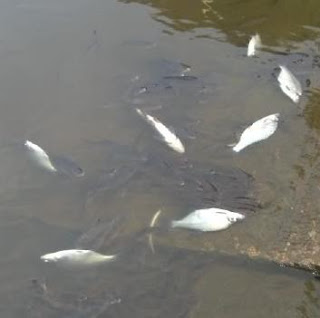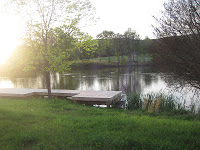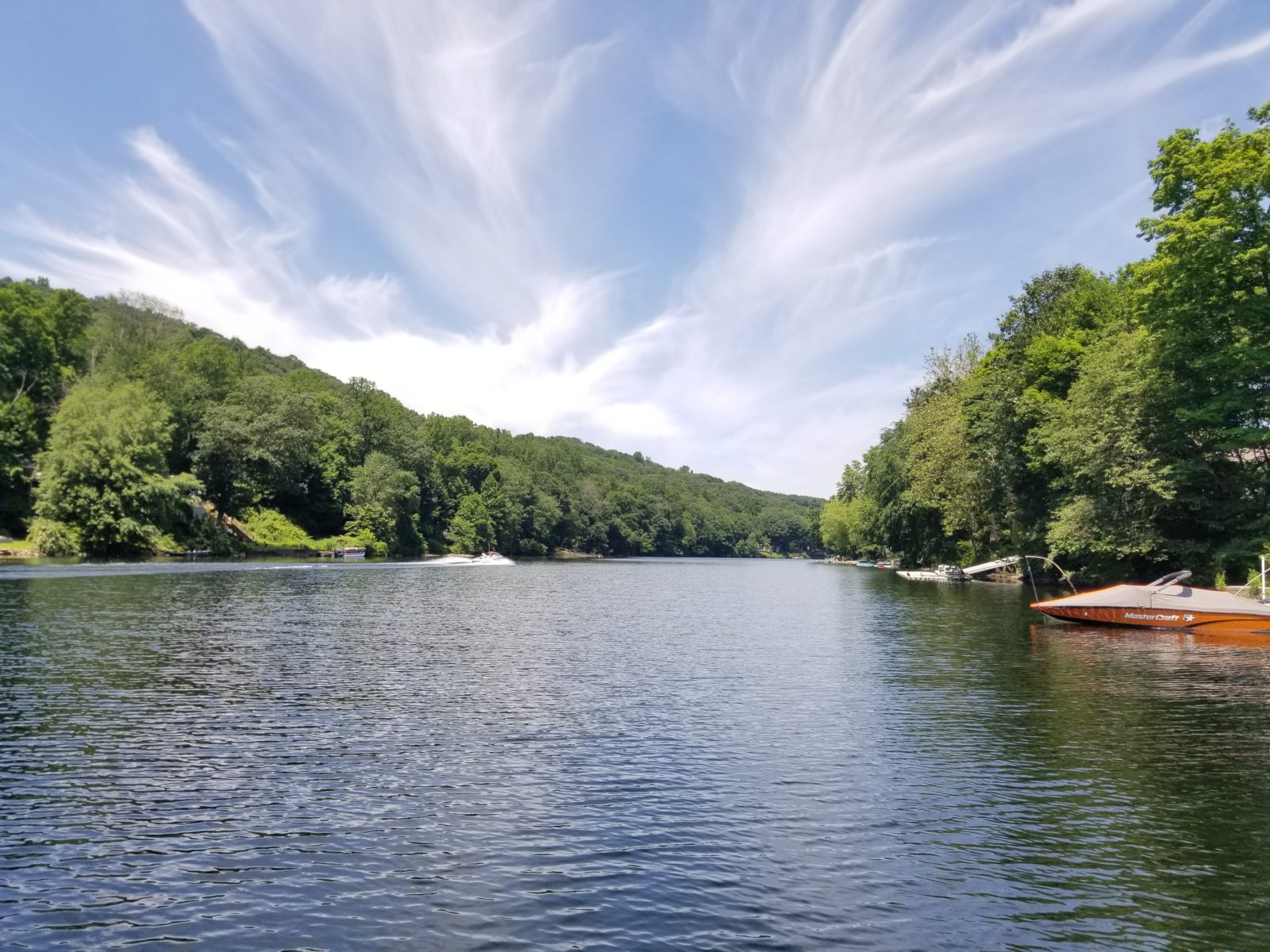By David Beasley, Lead Fisheries Biologist
 Proper pond management will greatly reduce the chances of a fish kill due to low dissolved oxygen levels, but in some cases, it does not eliminate the scenario. Keeping aquatic vegetation, algae and microscopic plants (phytoplankton) within acceptable densities while properly aerating is the best way to reduce the chances of having a fish kill. Many stormwater ponds require management due to the high level of nutrients that accumulate from surface run off. These nutrients feed algae and plants that grow at a very rapid rate when water temperatures are warm. These vulnerable ponds require different management tools and techniques to control plant matter and limit the chances of having a fish kill.
Proper pond management will greatly reduce the chances of a fish kill due to low dissolved oxygen levels, but in some cases, it does not eliminate the scenario. Keeping aquatic vegetation, algae and microscopic plants (phytoplankton) within acceptable densities while properly aerating is the best way to reduce the chances of having a fish kill. Many stormwater ponds require management due to the high level of nutrients that accumulate from surface run off. These nutrients feed algae and plants that grow at a very rapid rate when water temperatures are warm. These vulnerable ponds require different management tools and techniques to control plant matter and limit the chances of having a fish kill.
 The oxygen requirement in ponds is highest when water temperatures reach the 80’s. During these warm temperatures, the water’s ability to hold oxygen is at its lowest. These two factors team together to reduce the stability of the pond, making the scenario of a fish kill more probable. When a pond’s water quality becomes unbalanced, something as simple as a few cloudy days are enough to induce a fish kill. It may come as an interesting fact to most, but fish kills almost always occur after several days of cloudy weather. The reason for this is because when sunlight is not present, plants actually use oxygen (respire). This scenario is natural and more common than many realize. One thing that many don’t realize is that when a fish kill is occurring or is about to occur, it will often happen over a series of days. When oxygen levels are low the fish in the pond will hang out near the surface of the pond. The fish will be very skittish and stressed out. One big give away is when dozens of fish all get startled at once as you approach the pond. Once oxygen levels reach into the lethal range it will likely take several days to kill the entire fish population. This gives pond owners a chance to aerate with surface pond aerators and add water from a neighboring pond using a siphon or a pump. Although it is not always practical, sometimes with enough notice the severity of a fish kill can be reduced by notifying a pond expert and taking the corrective actions necessary.
The oxygen requirement in ponds is highest when water temperatures reach the 80’s. During these warm temperatures, the water’s ability to hold oxygen is at its lowest. These two factors team together to reduce the stability of the pond, making the scenario of a fish kill more probable. When a pond’s water quality becomes unbalanced, something as simple as a few cloudy days are enough to induce a fish kill. It may come as an interesting fact to most, but fish kills almost always occur after several days of cloudy weather. The reason for this is because when sunlight is not present, plants actually use oxygen (respire). This scenario is natural and more common than many realize. One thing that many don’t realize is that when a fish kill is occurring or is about to occur, it will often happen over a series of days. When oxygen levels are low the fish in the pond will hang out near the surface of the pond. The fish will be very skittish and stressed out. One big give away is when dozens of fish all get startled at once as you approach the pond. Once oxygen levels reach into the lethal range it will likely take several days to kill the entire fish population. This gives pond owners a chance to aerate with surface pond aerators and add water from a neighboring pond using a siphon or a pump. Although it is not always practical, sometimes with enough notice the severity of a fish kill can be reduced by notifying a pond expert and taking the corrective actions necessary.
Avoiding the situation where a fish kill is possible is the best approach to preventing a fish kill. The two best practices that will keep the water in your pond healthy and your fish safe are to properly aerate while maintaining an acceptable shoreline vegetative buffer.
Contact the experts at 888-480-5253 for all of your lake, pond and fisheries management needs.
David Beasley is a Lead Fisheries Biologist with SOLitude Lake Management. Since 1998, SOLitude Lake Management has been committed to providing full service lake and pond management services that improve water quality, preserve natural resources, and reduce our environmental footprint. Services are available throughout the Eastern United States. Fisheries management consulting and aquatic products are available nationwide. Learn more about SOLitude Lake Management and purchase products at www.solitudelakemanagement.com.










